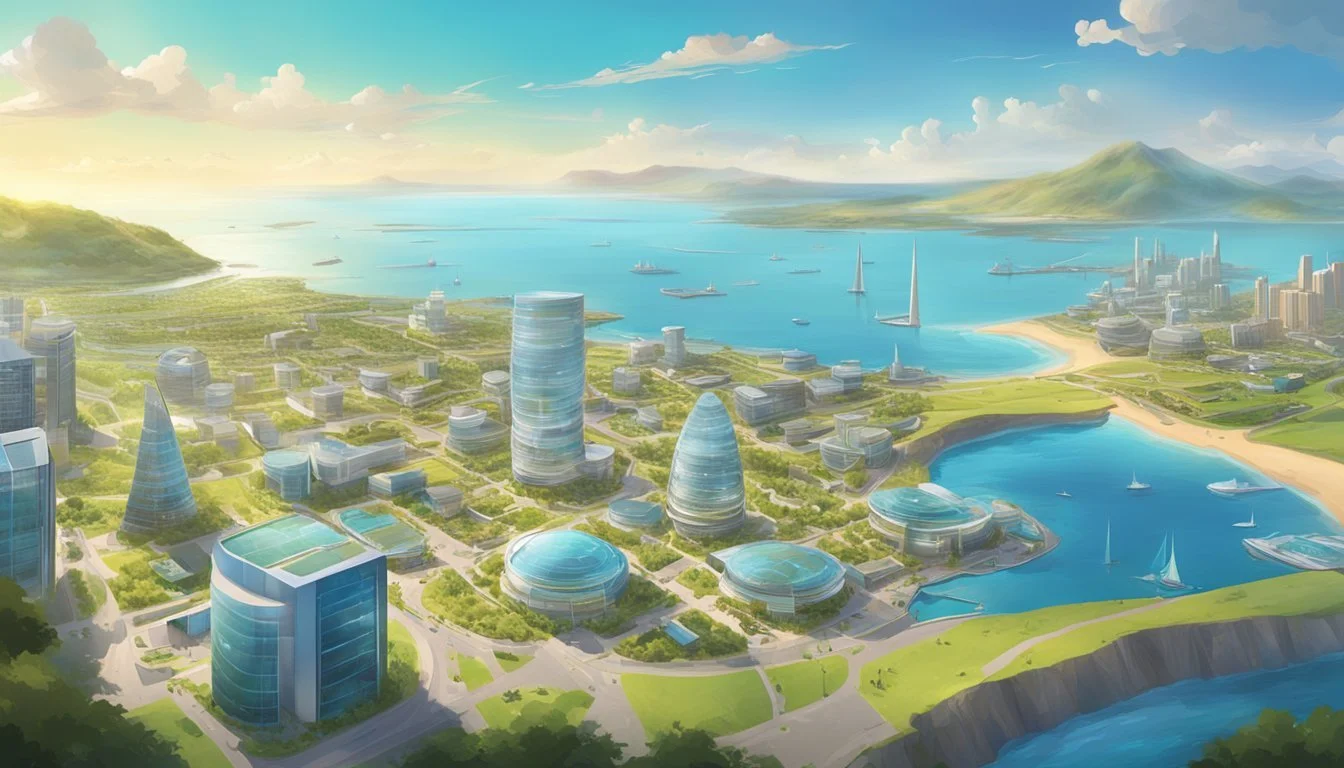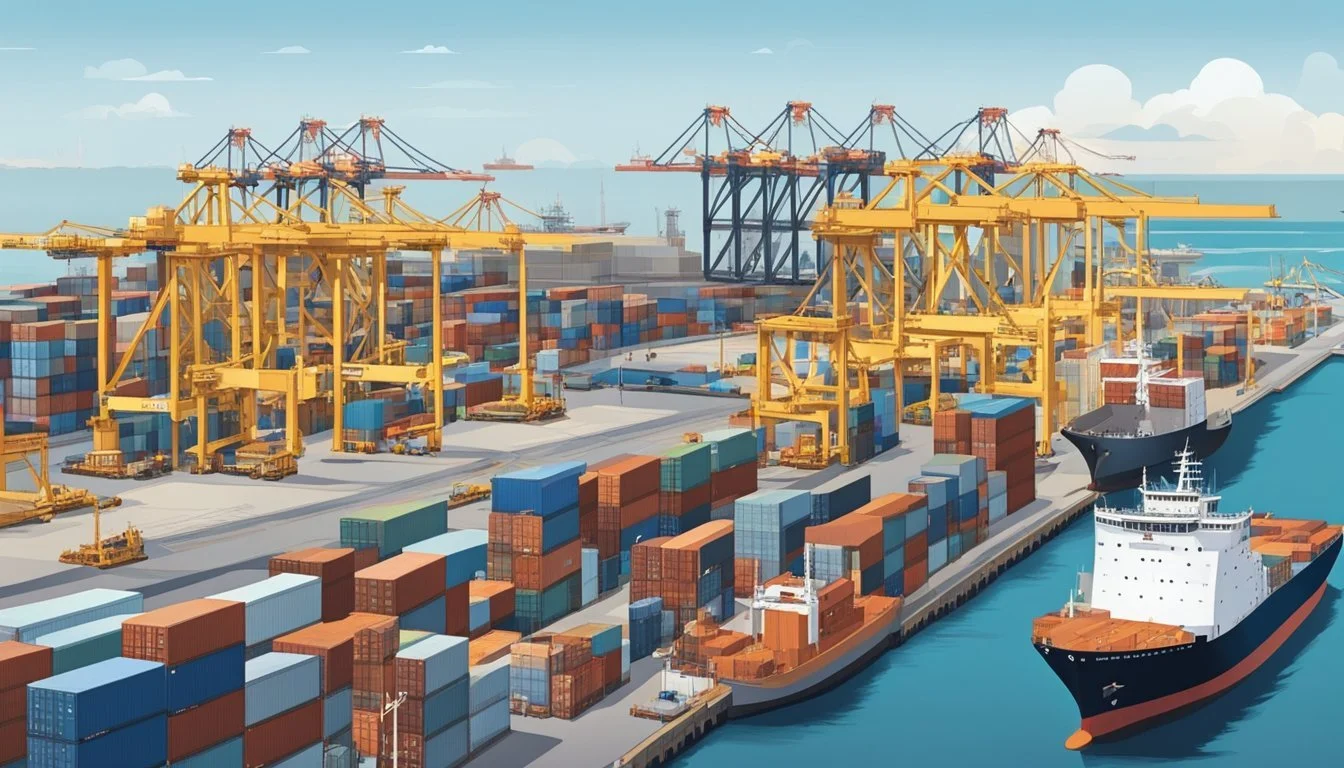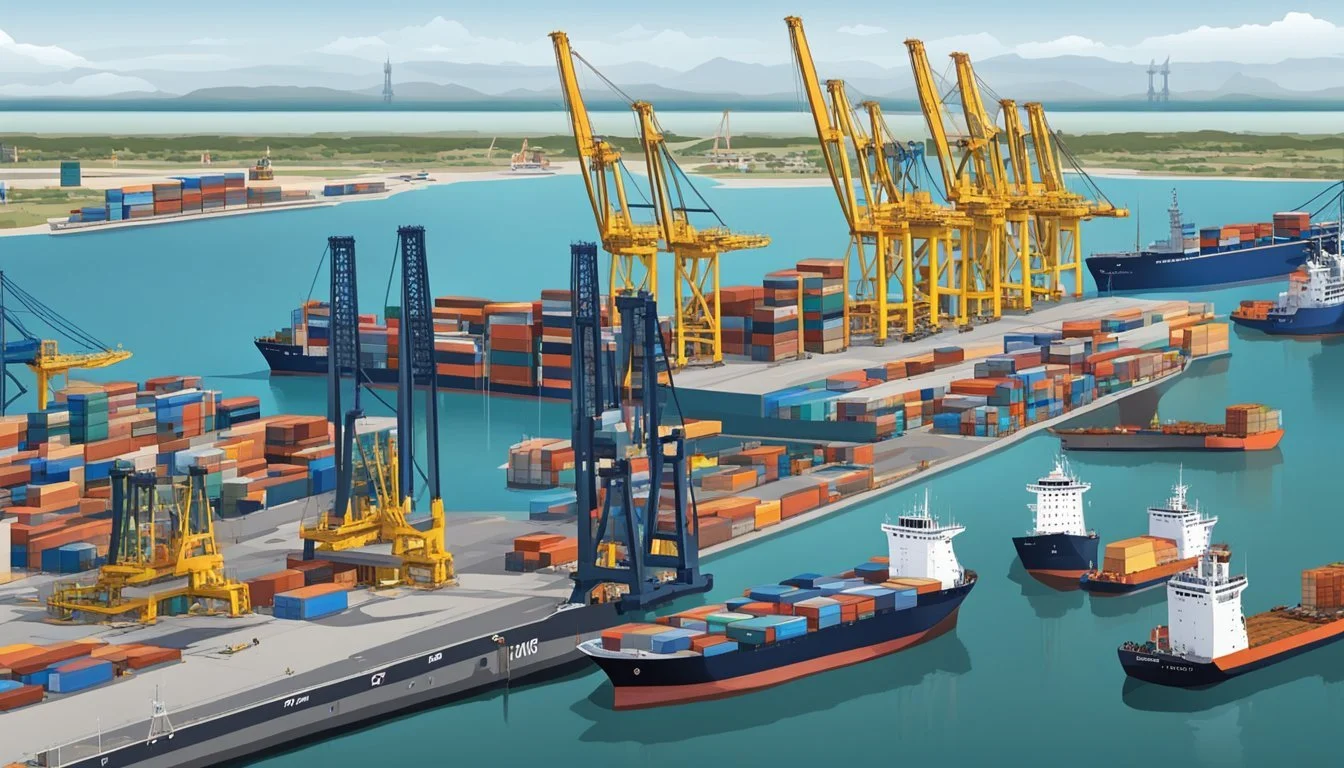Gulf Coast Free Land
Opportunities for New Settlers
Gulf Coast Free Land is an appealing concept that catches the imagination of many looking to relocate or invest in a region famous for its natural beauty and friendly communities. The Gulf Coast, stretching across five states including Florida, Alabama, Mississippi, Louisiana, and Texas, offers a unique blend of white sand beaches, emerald waters, and a laidback lifestyle. Mississippi Gulf Coast, in particular, stands out with its inviting small towns and rich history, making it a prime candidate for opportunities in free land programs.
The idea of free land in the Gulf Coast region opens doors to potential homeowners and investors who might otherwise have overlooked this vibrant area. From the charming small towns to the expansive and preserved natural landscapes, the Gulf Coast is becoming an increasingly attractive option. Programs offering free land are often part of broader initiatives to stimulate community growth and economic development, making this a win-win situation for both newcomers and the local populace.
If you are considering a move or investment in the Gulf Coast, understanding these opportunities could be a game-changer. With picturesque beaches, welcoming towns, and strategic initiatives aimed at boosting local economies, the Gulf Coast offers more than just scenic beauty—it presents tangible opportunities for personal and financial growth.
Historical Background
The history of Gulf Coast Free Land initiatives is rooted in the early colonization of the Mississippi Gulf Coast and the industrial developments that followed. These efforts have shaped the region's land distribution and development practices.
Genesis of Gulf Coast Free Land Initiatives
Early colonization on the Mississippi Gulf Coast began during the seventeenth and eighteenth centuries with a mix of European settlers and indigenous peoples shaping the landscape. By the twentieth century, land initiatives gained momentum due to industrial advancements. Prominent investors and stakeholders saw the potential for economic growth, driving the concept of offering free or low-cost land to attract settlers and industry.
Gulfport, for instance, became a focal point during the Industrial Revolution, highlighting the role of strategic land allocation to foster urban and infrastructural development. These land initiatives were pivotal in transforming the sparsely populated coastal regions into bustling economic hubs.
Land Distribution and Development
The distribution of land along the Gulf Coast was marked by systematic efforts to sell or offer land parcels, often with incentives. Listings for "Land for Sale" in this region frequently detailed the "Acre Price" and "Available Properties", allowing potential buyers to understand the market dynamics.
Information on properties typically included "Listing Age", "List Price", and "Property Size", aiding in informed decision-making. The practice of offering attractive deals spurred significant growth in population and industry, marking a substantial shift from the region's historical roots. This strategic approach facilitated the conversion of rural and undeveloped areas into prominent residential and commercial zones.
Geographical Significance
The Gulf Coast Free Land region encompasses significant areas in states like Texas and Mississippi, presenting unique geographical characteristics. This section explores the distinct aspects of these states and compares their features.
Comparative Analysis of Gulf States
The Gulf states offer a range of geographical landscapes and climate conditions. The Texas Gulf Coast consists of extensive barrier islands, vast coastal plains, and notable cities such as Houston and Galveston. This coastline experiences warm temperatures and high humidity.
In Mississippi, areas such as Ocean Springs and Jackson County are noted for their scenic coastal regions with estuaries and barrier islands. Mississippi's coastline tends to be less industrially developed compared to Texas. Its climate is characterized by hot summers and mild winters.
Texas vs. Mississippi Gulf Coast
The Texas Gulf Coast is characterized by its long stretches of sandy beaches and busy ports. Cities like Houston benefit from access to the Gulf of Mexico, boosting economic activities, particularly in shipping and petrochemicals.
In contrast, the Mississippi Gulf Coast includes coastal towns such as Ocean Springs, which blend natural beauty with historical charm. Jackson County, with its mix of industry and nature reserves, reflects the region's diverse economy. This area remains less congested and offers a quieter coastal experience compared to the bustling Texas Gulf Coast.
Economic Perspectives
Engaging with the concept of Gulf Coast Free Land brings into focus crucial aspects such as the impact on local economies and the potential for investment and diversified economic growth.
Impact on Local Economy
Free land initiatives can significantly influence local economies by attracting new residents and boosting economic development. Residents build homes, start businesses, and contribute to communities.
This can lead to the creation of jobs, increased consumer spending, and enhanced local business revenues. Moreover, the construction industry often sees robust growth, benefiting from increased demand for housing.
Local infrastructure may improve as governments invest in necessary services to lure new residents, and these initiatives often work in tandem with RESTORE Act projects, aiming to rejuvenate the region economically and environmentally.
Investment Opportunities and Economy Diversification
By leveraging free land opportunities, regions can diversify economically. Investors may be encouraged to fund new ventures in areas like technology, green energy, or tourism, which can, in turn, create a more resilient economic structure.
For example, Jackson County Economic Development Foundation supports various projects that complement these goals. Technological developments often accompany such investments, further driving local innovation.
Diversification reduces economic dependency on a single industry, making the economy more robust against market fluctuations. This strategy underpins long-term success and economic stability, attracting both small-scale entrepreneurs and large corporations.
Land and Agriculture
The Gulf Coast region offers diverse agricultural opportunities with vast areas suited for crop cultivation, livestock farming, and aquaculture developments. Each type of land use contributes uniquely to the local economy and the sustainability of the region.
Agricultural Lands
The Gulf Coast region has substantial tracts of agricultural land, often measuring hundreds of acres. These areas are used for growing crops like cotton, soybeans, and pecans. Farms here are traditionally family-owned and have been cultivated for generations, showcasing rich soil and favorable growing conditions.
Farmers in this region also engage in livestock raising, with some properties featuring extensive pastures for cattle and horses. Key buildings on these lands include barns, storage facilities, and residential houses, often equipped for modern agricultural practices.
Notably, some farms integrate crop cultivation with pecan orchards and other specialty crops, adding to the region's agricultural diversity. This combination allows for a sustainable and profitable farming model while preserving soil health and local ecosystems.
Aquaculture Developments
Aquaculture is a growing sector in the Gulf Coast, with many properties dedicating specific areas to aquatic farming. Catfish farming is particularly prominent, with numerous ponds designed for efficient aquaculture operations. These ponds are strategically located and managed to optimize water quality and fish health.
In addition to catfish, some farms also focus on shrimp and other aquatic species, benefiting from the region's warm climate. The infrastructure required includes hatcheries, feeding stations, and water management systems.
These developments not only provide a steady supply of seafood to local and national markets but also create employment opportunities. Aquaculture on the Gulf Coast thus contributes significantly to the agricultural economy by diversifying production and ensuring sustainable use of water resources.
Industrial Growth
The Gulf Coast Free Land initiative has catalyzed substantial industrial development, positioning the area as a hub for innovative manufacturing and technology assets. This progress is closely tied to key facilities and strategic investments.
Sunplex Light Industrial Park
Sunplex Light Industrial Park stands out as a cornerstone for industrial expansion in Jackson County. Located in Gautier, Mississippi, the park has attracted various small and medium-sized enterprises by offering attractive incentives, including tax benefits and streamlined regulatory processes.
Managed by the Jackson County Board of Supervisors, Sunplex provides state-of-the-art infrastructure, ensuring businesses have the utilities and access required for smooth operations. Its proximity to major highways and the Gulf of Mexico allows firms to seamlessly integrate their logistics and distribution channels.
The park fosters a conducive environment for high-growth, technology-oriented investments, making it a preferred choice for companies seeking to leverage the region's economic development ecosystem. Recent additions to Sunplex include firms specializing in advanced manufacturing and light industrial activities, cementing its role as a dynamic industrial hub.
Manufacturing and Technology Assets
The Gulf Coast's commitment to fostering manufacturing and technology growth is evident in its robust infrastructure and strategic partnerships. Significant investments have been made to enhance local capabilities, including the new Gulf Landing Logistics Center near Southwest Florida International Airport, a project resulting from a $40 million land deal.
ExxonMobil's and SABIC's new manufacturing facility at Gulf Coast Growth Ventures is another key asset, representing around $10 billion in infrastructure investments. This facility is designed to produce significant quantities of industrial goods, supporting the local economy through jobs and increased tax revenues.
The diverse array of assets across the Gulf Coast underpins a synergistic ecosystem where technological advancements meet industrial prowess. These investments not only generate billions in economic growth but also attract a skilled workforce, fostering a vibrant industrial community.
In summary, the Gulf Coast’s strategic focus on industrial parks like Sunplex and large-scale manufacturing facilities illustrates a commitment to sustainable and innovative industrial growth.
Research and Innovation
This section explores significant developments in Gulf Coast research, focusing on the advancements in aquatic food research and strategic partnerships with academic institutions.
Northern Gulf Aquatic Food Research Center
The newly approved Northern Gulf Aquatic Food Research Center is set to make substantial contributions to aquatic food research.
Located in Ocean Springs, the center is a pioneering facility on Mississippi's coast. It aims to advance the study and production of aquatic food sources, critical for both local economies and environmental sustainability.
Mississippi State's leadership in this venture, supported by the Mississippi Institutions of Higher Learning, underscores the state's commitment to enhancing STEM research, fostering innovation, and addressing ecological challenges.
Collaborations with Academic Institutions
Collaborative efforts with academic institutions are vital for advancing research initiatives in the Gulf Coast region.
Mississippi State University, along with other local and national institutions, is spearheading various research projects. These partnerships enhance resource sharing and expertise pooling, driving forward the study of marine and environmental sciences.
Funding and fellowship programs from bodies like the Gulf Research Program play a crucial role in supporting these initiatives, empowering researchers and facilitating groundbreaking discoveries that benefit both the community and broader scientific community.
Environmental and Public Health
Effective management of water quality and ensuring the health impacts of aquatic foods are crucial for maintaining a healthy environment on the Gulf Coast. These key areas are essential for public safety and environmental sustainability.
Water Quality and Safety Programs
Water quality on the Gulf Coast is a critical concern, particularly given the extensive industrial and energy production activities. Regular safety testing and monitoring by agencies like the U.S. Environmental Protection Agency (EPA) help ensure that water remains safe for public use. These programs often involve quality assurance protocols to detect and address pollutants such as heavy metals and chemicals.
Community resilience programs are supported by substantial federal funding aimed at improving water quality and protecting habitats. The EPA's recent grants exceeding $11 million aim to enhance the environmental health of regions like Mississippi. These efforts focus on reducing contamination and managing erosion issues effectively.
Health Impacts of Aquatic Foods
Consumption of aquatic foods is significant in the Gulf Coast, linking directly to public health. Ensuring the safety of seafood involves rigorous standards and monitoring set by the U.S. Food and Drug Administration (FDA). Testing for contaminants like mercury and pathogens is vital to prevent health issues.
Studies have shown that climate change impacts can exacerbate these health risks due to warmer temperatures and changing water conditions, which may affect marine life and water safety. Healthy seafood contributes to nutrient intake but must be carefully managed to avoid adverse health effects. Effective management strategies are essential for sustaining both the ocean resources and the health of the coastal population.
Real Estate Dynamics
The Gulf Coast offers unique opportunities for those interested in land acquisition. Understanding the current trends and strategies for buying land in this region is essential.
Trends in Land Sales
Market Trends
The real estate market along the Gulf Coast has seen some shifts recently. As of April 2024, median home prices in areas such as Dauphin Island have dropped sharply, indicating a possible trend in lower land prices. Buyers can potentially find more favorable deals this year compared to last.
Demand and Supply
The demand for Gulf Coast land, especially near scenic locations, continues as people seek investment and vacation properties. Despite this demand, recent drops in home prices suggest that the supply may be outpacing the demand, leading to more competitive prices for land buyers.
Buying Land on the Gulf Coast
Research and Due Diligence
When buying land, it is crucial to research property details thoroughly. Buyers should check for zoning laws, land use restrictions, and environmental considerations. Engaging a local real estate expert can provide valuable insights into these aspects.
Financing and Costs
Purchasing land involves different financial considerations than buying a developed property. Buyers should explore financing options specifically for land acquisition, which might include higher interest rates or larger down payments compared to residential mortgages.
Investment Potential
The Gulf Coast has a mix of investment opportunities, from beachfront properties to inland acreage. Assessing the potential for appreciation and development can help make an informed investment decision. The current lower prices could be an opportune moment to invest for long-term gains.
Regulatory Framework and Support
This section details the regulatory framework managed by both state and federal entities and the role of public-private partnerships in supporting Gulf Coast Free Land initiatives.
Role of State and Federal Entities
Various state and federal entities play a critical role in managing the Gulf Coast Free Land projects. Mississippi Department of Environment Quality ensures environmental standards are met, while the National Oceanic and Atmospheric Administration (NOAA) oversees marine and coastal ecosystem health.
The Agricultural Research Service and the U.S. Department of Agriculture contribute to sustainable agricultural practices in the region. Furthermore, state departments related to marine resources and health collaborate with federal bodies like the Bureau of Ocean Energy Management (BOEM) to handle offshore regulatory requirements.
Public-Private Partnerships
Public-private partnerships are vital for the success of Gulf Coast Free Land initiatives. These partnerships involve collaboration between governmental bodies and private sector entities to enhance innovation and resource allocation.
Private companies invest in sustainable technologies and infrastructure projects, while public agencies provide regulatory frameworks and financial support. This synergy aims to boost economic growth and ensure environmental sustainability. Examples include joint ventures in sustainable agriculture, funded partially through federal grants and private investments, and offshore wind energy projects regulated by state and federal laws.
Industry Analysis
The Gulf Coast's economy has distinct strengths, particularly in seafood and emerging alternative sectors. This dynamic regional economic landscape offers unique opportunities and challenges.
Seafood Industry Outlook
The Gulf Coast is renowned for its robust seafood industry. This region benefits from abundant natural resources, making it a leading supplier of seafood products such as shrimp, oysters, and crabs. Significant contributions come from local fisheries dedicated to maintaining high standards for food safety and sustainable practices.
The Executive Director of the Gulf Coast Seafood Industry highlights the importance of maintaining these standards to meet market demands. The economic impact of this sector is substantial, employing tens of thousands and supporting the broader Blue Economy. Key challenges include environmental sustainability and regulatory compliance, which are crucial for future growth.
Growth of Alternative Sectors
In addition to seafood, the Gulf Coast is witnessing significant growth in alternative sectors. Industry clusters such as technology, healthcare, and renewable energy are shifting the regional economic landscape. Economic Development initiatives supported by the Houston-Galveston Area Council (H-GAC) aim to diversify the local economy.
Healthcare and biotechnology are experiencing rapid growth, driven by investment in research and development. Renewable energy sectors, including wind and solar, provide new employment opportunities and contribute to economic resilience. Comprehensive regional plans and strategic partnerships foster an environment conducive to business innovation and expansion.
Technology and Infrastructure
The Gulf Coast region is rapidly evolving into a hub of technological advancement and robust infrastructure. This transformation is fuelled by strategic investments and the development of cutting-edge facilities that support various industrial and technological sectors.
Innovation Accelerators
Key players such as the Gulf Coast Technology Community and Jackson County Port Authority are driving innovation. These entities are fostering technological advancements by providing incubator space for startups and established companies alike. Such spaces are crucial for nurturing groundbreaking technologies in fields such as biosafety laboratories and aquatic food products.
Chemical residues monitoring technology is another area of focus, helping ensure environmental safety while promoting industrial growth. By facilitating CCS-as-a-service models and similar initiatives, innovation accelerators are setting the Gulf Coast on a path toward sustainable technological leadership.
Infrastructure and Transportation
The region boasts an impressive array of infrastructure assets that are instrumental in supporting technological developments. Interstate 10 serves as a vital transportation artery, connecting key industrial zones and enabling efficient movement of goods and personnel.
Additionally, the Gulf Coast's network includes commercial CO2 pipelines and hydrogen pipelines, which are essential for carbon capture and storage (CCS) operations. This infrastructure not only supports existing industries but also paves the way for future advancements, particularly in energy and manufacturing sectors.
The Jackson County Port Authority plays a significant role in facilitating these technological and transportation advancements, ensuring the region remains competitive and future-ready.
Cultural and Recreational Aspects
The Gulf Coast offers a rich blend of recreational opportunities and cultural experiences. Key highlights include vibrant tourism centered around fishing and coastal leisure, along with educational contributions from local institutions.
Tourism and Leisure Activities
The Gulf Coast, known for its beautiful shorelines and diverse wildlife, is a prime destination for both relaxation and adventure.
Fishing is a major draw, particularly in regions like Galveston, where enthusiasts can enjoy both deep-sea and coastal fishing. The Cedar Key National Wildlife Refuge provides excellent opportunities for bird-watching and kayaking, offering a unique glimpse into the area's natural beauty.
Each year, locations such as Gulf Shores and Orange Beach host a variety of seasonal festivals. Events like the Ballyhoo Festival celebrate the cultural heritage of the region by showcasing indigenous dance, music, and art. These festivals enrich the visitor experience, making it more than just a trip to the beach.
Educational Contributions
Educational institutions along the Gulf Coast play a significant role in preserving and promoting local culture and science.
The Mississippi Gulf Coast Community College contributes by offering specialized programs that highlight the region's unique environmental and cultural heritage. Courses focus on marine biology, environmental science, and the history of the Gulf Coast, fostering a deeper appreciation and knowledge among students.
Additionally, organizations like the Conservation Foundation partner with local governments and communities to protect natural habitats and provide recreational access. Their efforts ensure the sustainability of the coastline while also educating the public about conservation.
These educational endeavors help maintain the cultural and recreational vibrancy of the Gulf Coast, blending learning with leisure.













